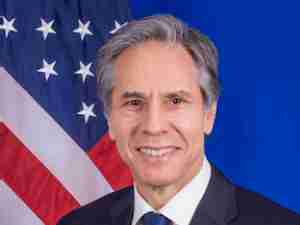Free Trade’s Critics Were Once Its Champions: Victoria Bateman
By: Victoria Bateman | Oct 06 2016 at 07:15 AM | International Trade
Globalization is clearly under attack, whether we look at trade flows or foreign direct investment. Part of the backlash against free-market policies that followed the 2008 financial crisis, protectionism has been on the rise:
The irony is that the very forces that are now attacking globalization were historically its fiercest advocates. And the early pioneers of free trade would never have seen the conflict with social justice that today’s opponents claim exists.
The free trade movement was born some two centuries ago in the very parts of Britain that voted Brexit – areas such as the cotton mill towns surrounding Manchester. In those days, the working classes helped lead the way to openness. Protectionism was seen as something that benefited established elites, such as rich landowners, and restricted opportunities for new businesses and their employees. From the consumer’s viewpoint, protectionism meant higher prices for basics such as food and clothing.
Not only were the working classes and new industrial business leaders in favor of international openness, so too were left-leaning economists such as John Maynard Keynes. While Keynes provided a powerful attack on free market thinking in his General Theory, published in the decade after the Great Depression, and with calls for greater state intervention, he simultaneously spoke up for international openness. Writing in the Manchester Guardian in 1922, Keynes argued that “peace, freedom of trade and intercourse, and economic wealth,” the tenets of what was then called liberalism, were far superior to the pursuit of “power, prestige, national or personal glory.”
Alongside the American Harry Dexter White, Keynes worked hard to devise international institutions that could place globalization on a sounder footing. The result was the Bretton Woods system, which provided the backdrop for a golden age of growth in the years that followed World War II.
This was a period of re-globalization and it was a period that successfully combined a degree of state intervention (creating the modern welfare state, for example), alongside an outward looking vision that facilitated growing trade between nations. The two worked in tandem: Intervention allowed economies to mitigate the adverse distributional consequences of globalization, while globalization served to keep a check on the state and prevent intervention undermining productivity performance. Trade growth boomed, as did living standards.
After the fall of Bretton Woods in the early 1970s, globalization became associated with laissez-faire economics and was no longer championed by economists on the left. Nor did they oppose it very strongly; while free market policies helped reduce unemployment and inflation in the 1980s and 1990s, the premise that globalization brought growth went unchallenged. That ended with the financial crisis. Left-leaning economists from Joseph Stiglitz to Ha-Joon Chang now see globalization as part of a basket of policies that fuel inequality.
The same logic that compelled the early globalization movement holds today, even if the much accelerated pace of innovation and the speed at which capital moves around the globe means that markets also create more disruption and can widen inequality. But the same formula that the early adopters championed can work to counterbalance those effects. It’s important that they do. From a historical perspective, global trade levels, international capital movements and migrant flows remain high, as the chart below shows. But the fact that they collapsed so spectacularly and quickly following the first big wave of globalization in the late nineteenth century shows that it can easily happen again:
In her Conservative Party speech on Wednesday, U.K. Prime Minister Therese May declared that she wanted a return to fairness, “supporting free markets but stepping in to repair them when they aren’t working as they should.”
That is an admirable goal and an achievable one. Restricting free trade and other freedoms will only make it harder.
This column does not necessarily reflect the opinion of the editorial board or Bloomberg LP and its owners.








